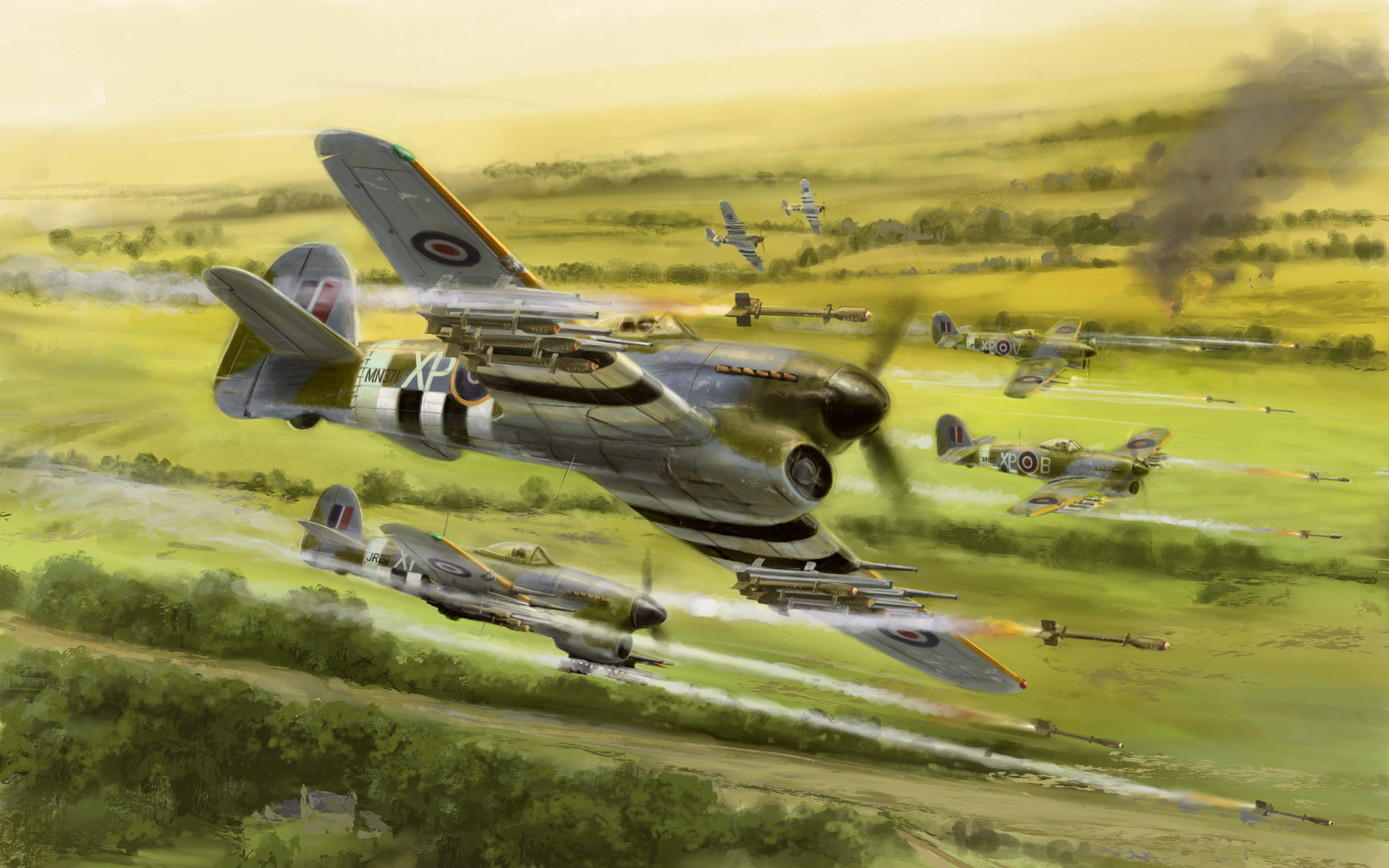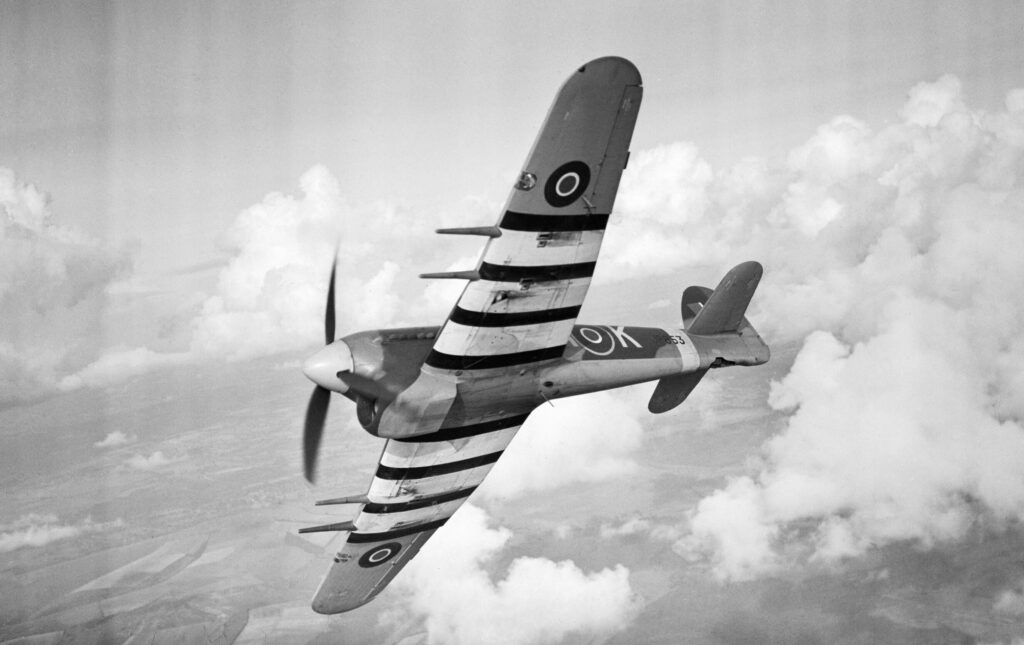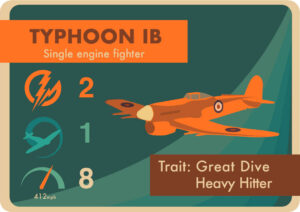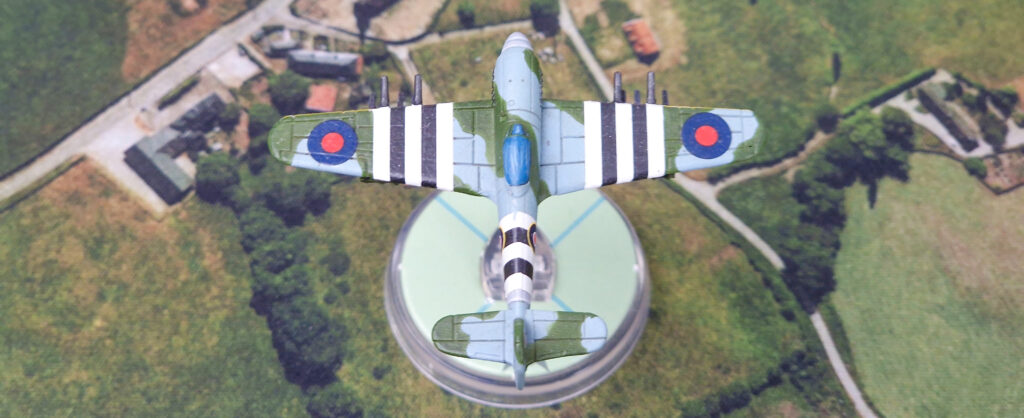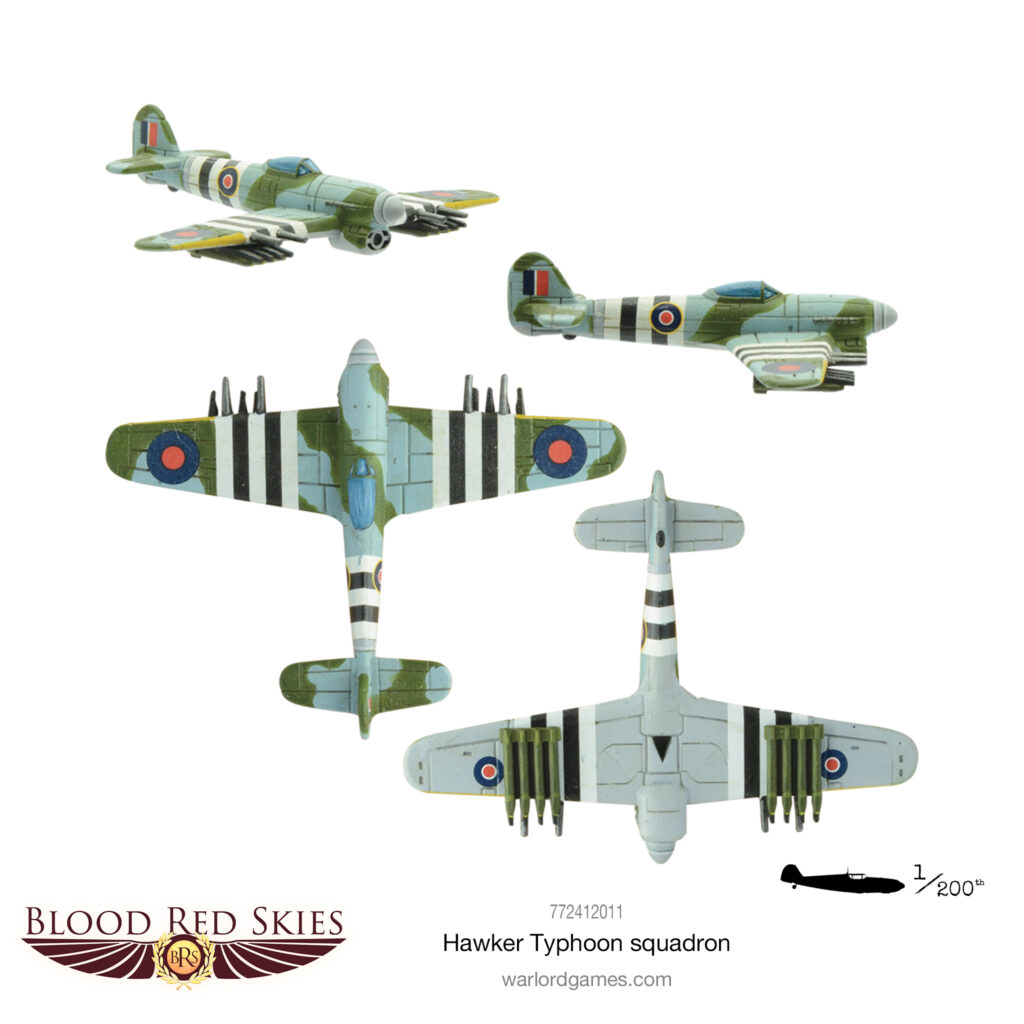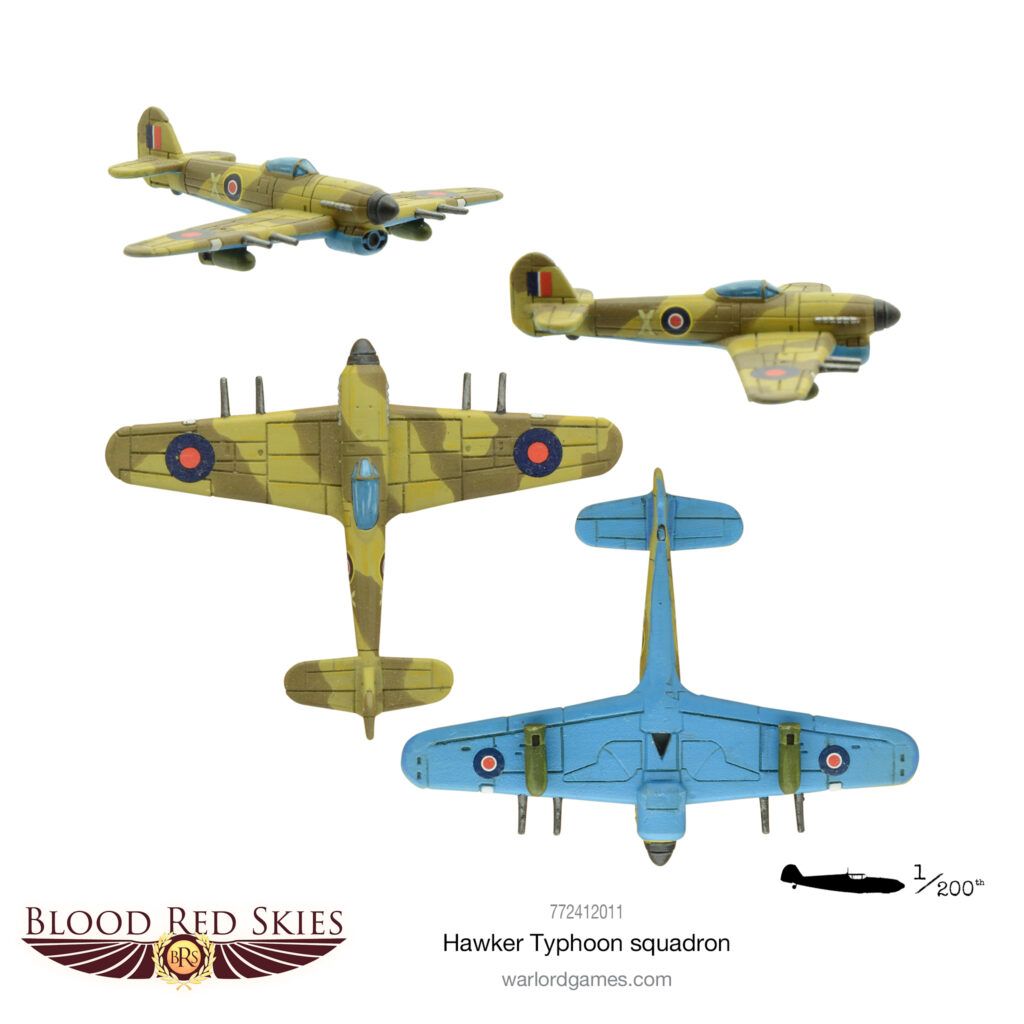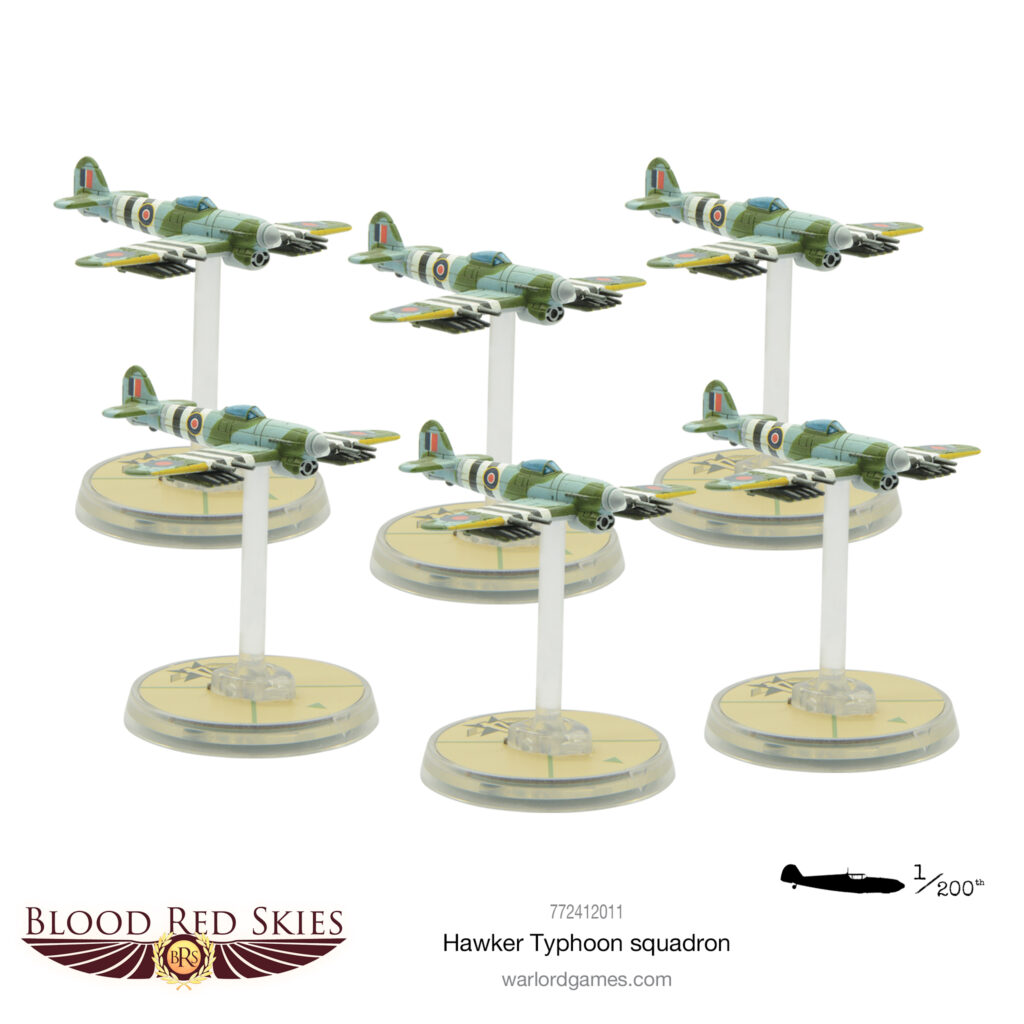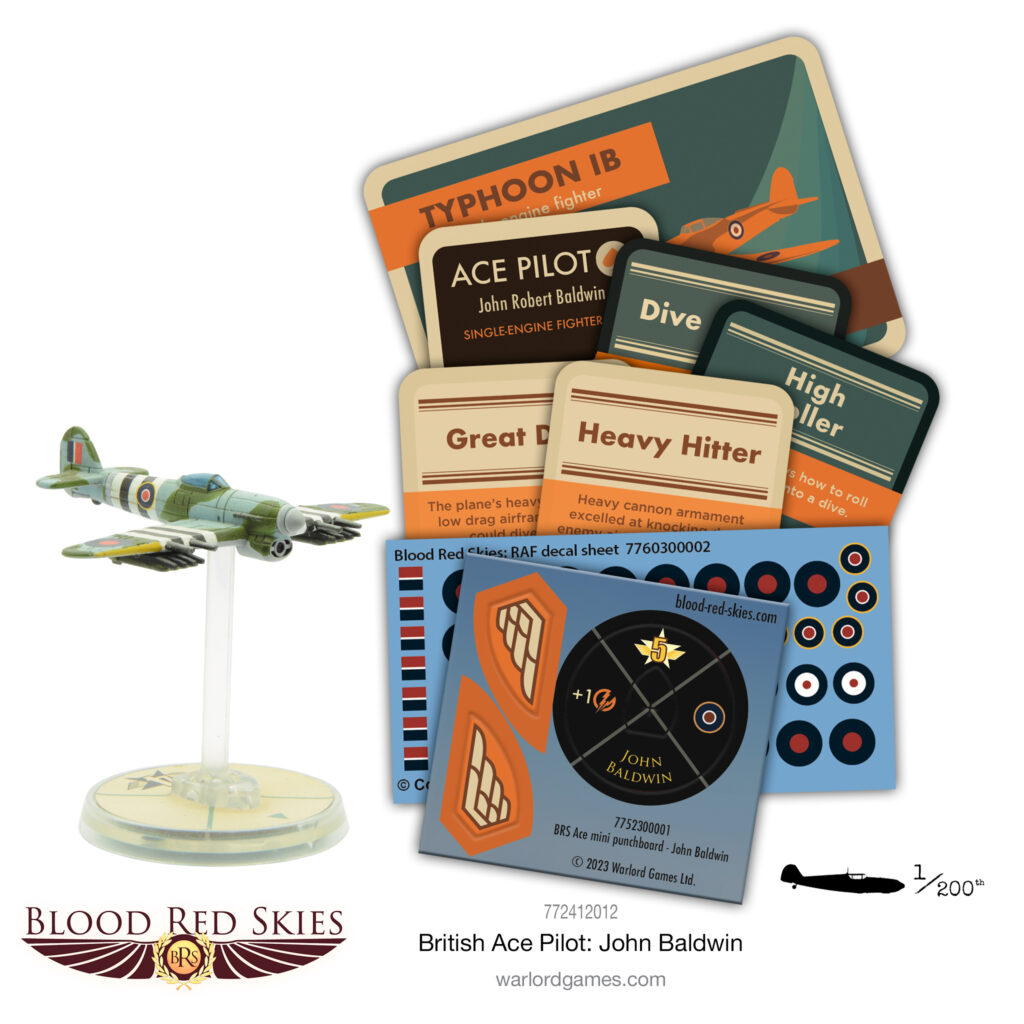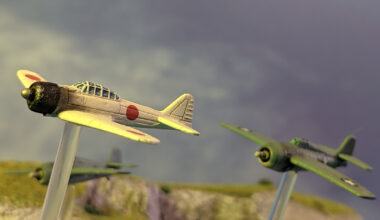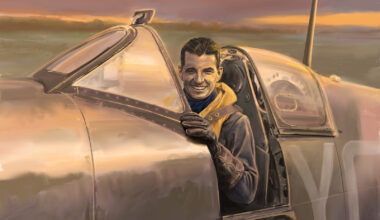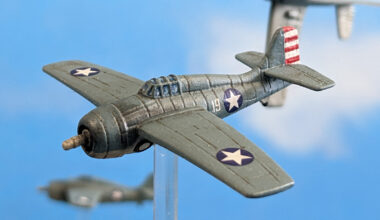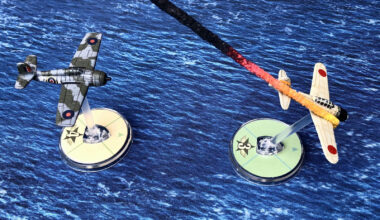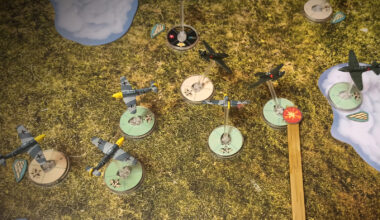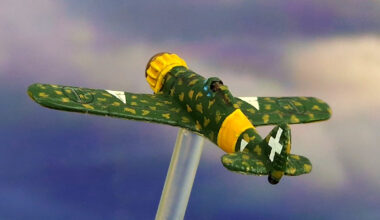Originally conceived in the late 1930s by legendary designer Sydney Camm as an eventual successor to the then brand-new Hawker Hurricane, the Typhoon suffered a protracted development period, mainly due to issues with the monstrously powerful Napier Sabre engine, as well as several crashes caused by structural failure when it was initially rushed into service in late 1941. It was not until late 1942 that these issues were addressed, and the type saw success as a low-level interceptor in defence of England. While capable in this role, it would truly find its niche in 1943 and ’44 as a ground-attack specialist. Armed with four 20mm Hispano cannon and either a pair of 1,000lb bombs or eight 3-inch RP-3 unguided rockets underwing, in skilled hands it became a lethal close air support asset, particularly when operated in the ‘cab rank’ system, wherein orbiting Typhoon formations were directed to targets marked with smoke by forward air controllers on the front lines. While the materiel damage caused by RAF Typhoons has been hotly debated over the years (in particular the number of German tanks claimed destroyed appears to have been heavily overstated), there is no denying their devastating impact on German morale, with high command quickly realising that it was too dangerous to move troops by day, which severely hampered the Wehrmacht’s ability to respond to the Allied thrusts inland after D-Day. Serving out the war, the Typhoon was quickly replaced by more modern aircraft, and sadly only one complete example survives today, at the Royal Air Force Museum London.
On the Table
We reached out to Ken Natt, admin of the dedicated (and highly active) Facebook group, The Blood Red Skies Ready Room, to talk us through some top tactics for fielding Hawker Typhoons on the tabletop.
Ken: “First up, look at the speed! 412mph in a 1941-era plane makes the Typhoon a real speed demon. Actually, it remains competitive even against later-war aircraft. Though its Agility isn’t the highest, this is not something to be put off by. Typhoons are all about their ability to dive coupled with superb armament. Pair the aircraft’s Great Dive trait with a matching Doctrine Card like Sustained Dive and you get the ability to spoil an opponent’s day from the other side of the table. You can quite easily Burn Advantage to dive, recover the Advantage using Sustained Dive and then shoot your opponent with your quad 20mm in a single activation. Many players will not realise just how far you can travel and in basic dogfighting scenarios, you can easily catch slower aircraft that are at a lower Advantage on turn one before they even get a chance to activate. The Heavy Hitter trait means that any hit automatically counts as a Critical Hit (ouch!). The Air To Air Rockets Equipment Card is also an option but it has the drawback of reducing your speed and therefore limiting your potential Initiative advantage, so it must be carefully considered.
If you don’t fancy the “Alpha Strike” option then a Doctrine like Dive Away can get you out of difficult situations by allowing you to dive even when you don’t have any Advantage to burn, putting distance between you and your opponent and (hopefully) letting you climb back up to rejoin the fight.
Typhoons are not expensive aircraft, you can easily fit six in a 500pt game with some reasonable pilot skills. A generic Ace will help you to get the drop on your opponents and help with Outmanoeuvres that will greatly benefit the rest of your Squadron. Which Ace skill you take is open to some discussion. If you are trying for the “Alpha Strike” tactic then Tactical Wizard is well worth looking at – it allows you a much-improved chance of starting at Advantage and allowing you to activate first. Another option is Master Tactician, but that does give your chosen targets a chance to avoid the Outmanoeuvre attempt no matter how outclassed they might be. A third option is Eagle Eyes, an oft-overlooked gem, this allows you to attempt to Outmanoeuvre from further away. At the end of the day, pick one that suits your play style.
For ground attack scenarios in which you already have an extra element of bombers, taking Typhoons and loading them with Strafing Ordnance, Bomb Shackles or Air to Ground Rockets is a good option that effectively doubles your ground attack capability.”
The Model
Our new Hawker Typhoon kit for Blood Red Skies depicts the definitive Mk Ib fighter-bomber variant, with the ‘blown’ canopy and a long-barrelled quartet of Hispanos. Included are optional RP-3 racks or 1,000lb bombs, allowing you to field your Typhoons in their iconic ground-attack role with your munitions of choice, or (with a very minor bit of conversion) as low-level fighters with guns only.
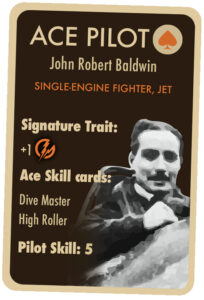
Naturally, a squadron of Typhoons needs an ace to lead them – enter John Robert Baldwin, DSO & Bar, DFC & Bar, AFC! The top-scoring ace on Typhoons (15 kills, plus one shared, four damaged, and five damaged on the ground), Baldwin flew the Typhoon exclusively during the war, having actually served in France as ground crew in 1940. Ending the war as a Wing Commander, he would go on to serve with the US Air Force on secondment in the Korean War, where he would be listed missing, presumed killed. while flying an F-86 Sabre. When looking for a named Ace Pilot to take your Typhoons into the fight, you can’t really go wrong with the best there ever was!
